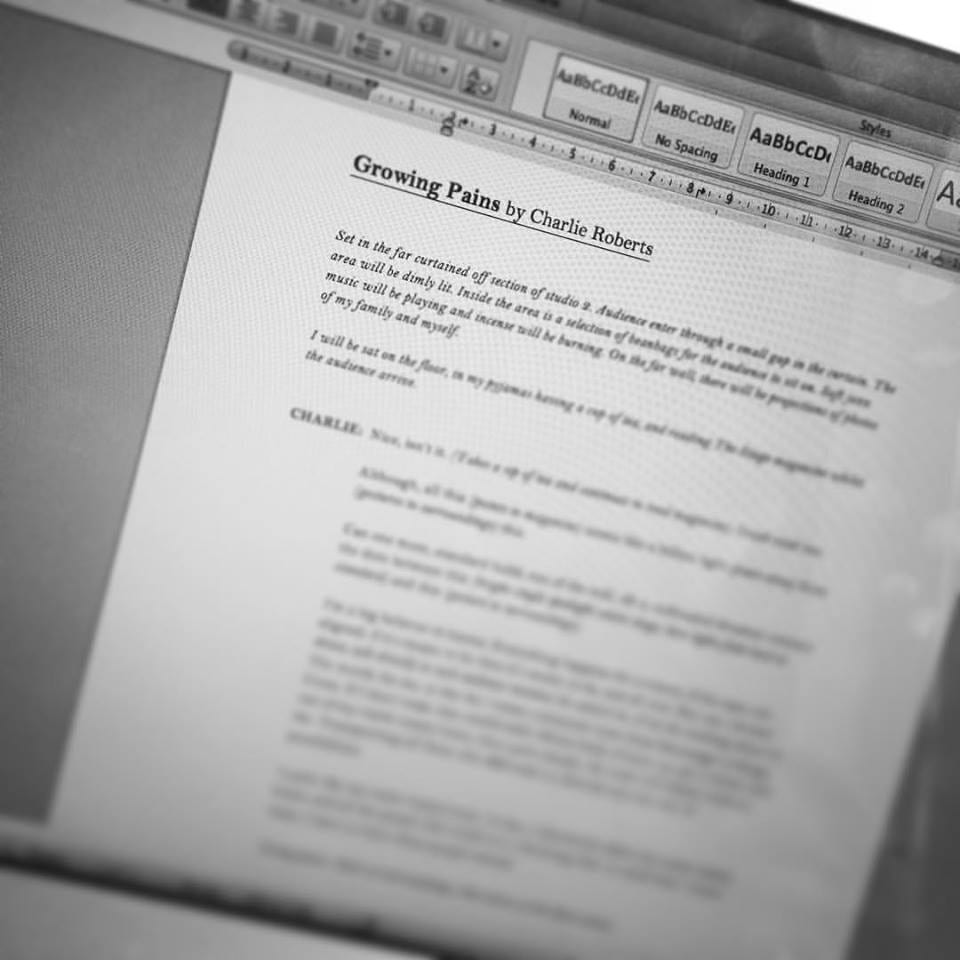Over the last few weeks I felt as though my concept had really started to develop. I began to form a clear structure; therefore I felt that I was in a position to start writing a script. I found this part of the process to be my favourite. I have loved seeing all the straggled ideas being strung together by this script. It was beginning to look like an actual show!
Performer & Audience Relationship
Sean Bruno and Luke Dixon’s book Creating Solo Performance (2015) has proven to be extremely beneficial throughout the creation process. Therefore, I decided to refer back to their writings for the script creating process. Before I write anything, Bruno and Dixon suggest that I decide my relationship with my audience, as this would alter the whole atmosphere and presentation of the performance and script. They comment that ‘the relationship between a solo performer and their audience is very different from that between an audience and any other form of performance’ (Bruno and Dixon, 2015, 38). ‘A solo show creates a dialogue with the audience’ (ibid, 39), therefore my relationship with them has to be acknowledged straight away. They state many types of relationships that a solo performer could hold with their audience, such as entertaining, seductive, relaxed, educative, intimate etcetera. I decided to choose a combination of a few relationships. I chose inclusive (as I am inviting them into my ‘cocoon’/ life), relaxed (as that is the overall feel of my cocoon, very chilled out) and entertaining (as I will be creating music for them). When choosing these, I thought back to performer and musician Adam Page. His solo shows were light-hearted and entertaining, and his dialogue reflected this. He opened his 2013 Edinburgh Fringe performance by asking everybody how they were doing, and to give a loud ‘whoop’ if they were from Scotland. This allowed the audience to immediately grasp the casual fun relationship that he was trying to achieve.
(Adam Page, 2013)
Much like Adam Page, the opening section of staging and dialogue will help me certify these relationships with my audience. Hopefully the relaxed environment from within the staging area, the jazz, the incense, the pj’s etcetera, will portray this visually. Verbally, I will speak very casually to them, as though my opening dialogue is just a selection of passing comments. For example, my opening line is “nice isn’t it” – referring to the atmosphere and staging, and “good read too” – referring to The Stage magazine that I will be reading with a cup of tea in my hand.
Starting at the end
I was originally aiming to write the script in a chronological structure, beginning, middle, and then the end. However, I found that writing the beginning and end before the middle was extremely useful. Anthony Herron stated that the beginning of the play is the problem/ need, the end is the self-revelation, and the bits in between are the characters journey to achieve this self-revelation (Herron, 2005, 21). He states that the writer ‘must first know the character’s personality and attributes along with his destination, then plot out how to get him there’ (ibid), suggesting that the writer ‘start at the end […], and then go back to the beginning and fill in the steps between’ (ibid). Following Herron’s advice, I finished writing the script before I made any music or wrote the dialogue about my relationships. I felt that knowing exactly what my final motivations were for the performance, effected what I wanted to musically create in the middle section. I originally wanted to create an upbeat happy song to represent my happy relationships. However, when I wrote the ending, I found myself being drawn towards a more reflective, mature outlook on my relationships, with also a hint of sadness for leaving them. This has now altered the type of music I want to create, now wanting a smoother rhythm, with a softer ‘loving’ tune, with a more sentimental and calm feel about it.
Work Cited
Bruno, S., Dixon, L. (2015) Creating Solo Performance. Oxfordshire: Routledge.
Herron, A. (2005) Scriptwriting and Structure. Lincoln: iUniverse.
Adam Page (2013) ADAM PAGE at the Edinburgh Fringe FULL SHOW. [online video] Available from http://youtu.be/ivZQFIGwX4E [Accessed 30 April 2016].

